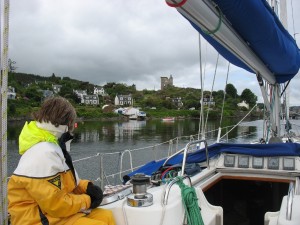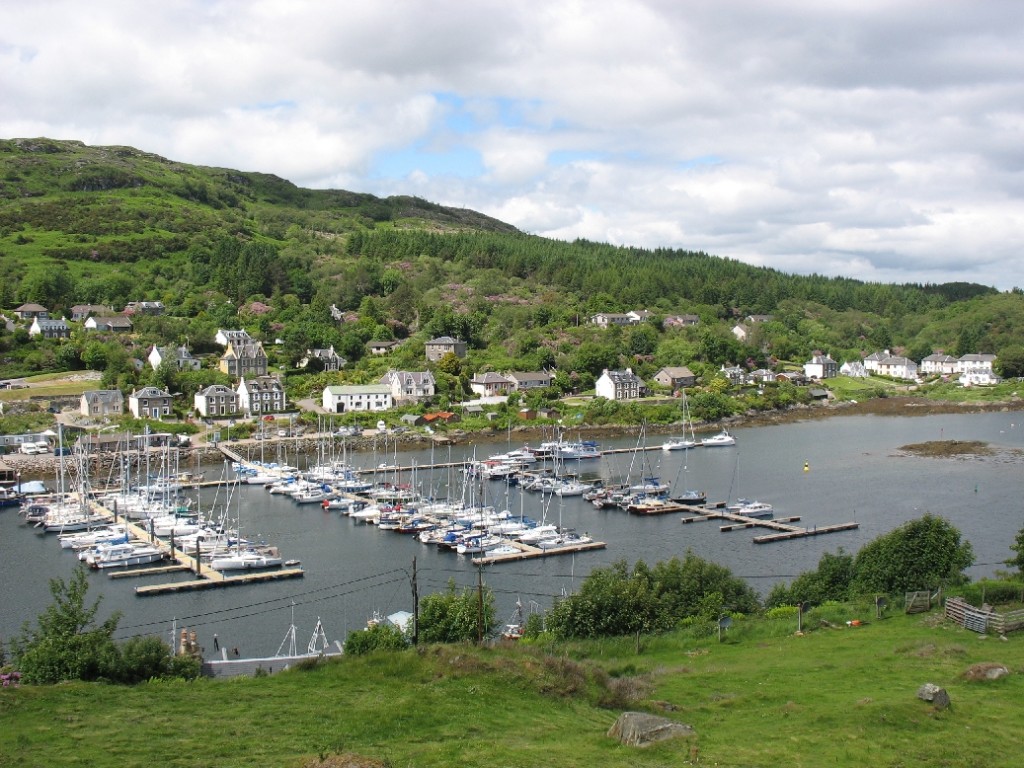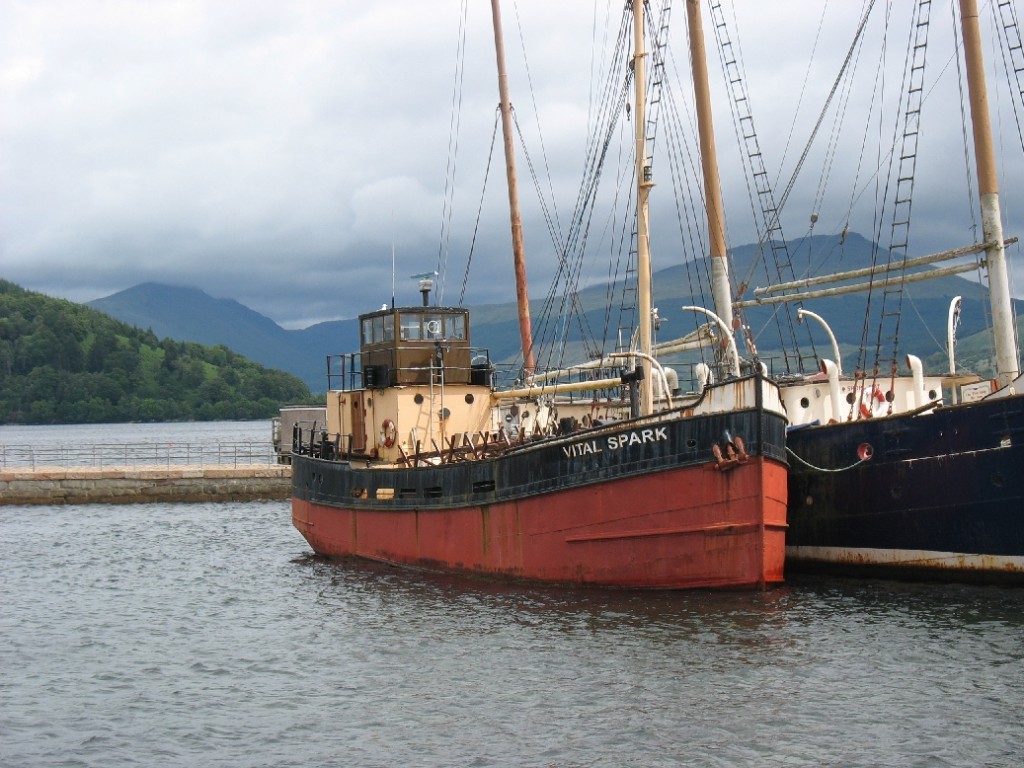Summary: Loch Ranza across to East Loch Tarbert. 12.9 miles in 2 hours and 5 minutes. A short hop from Arran across to Tarbert on Loch Fyne.

After a peaceful night (generally) in Loch Ranza, we headed off at 08.10 across to Tarbert. We started with a pleasant sailing breeze and optimistically had full sail for a while. However, the weather gods knew we were coming and so the wind died, then went round 50 degrees and then later blew up (to a 4 gusting 5) and then dropped down again, so we ended up sailing for just half an hour and the rest was spent motorsailing directly to windward. Neverthless a nice trip and Tarbert is a beautiful harbour. Weaving around the islands (Eilean a Choic and Sgeir Bhuide) past first a port hand and then starboard hand beacon makes for a tight entrance, but you come into a beautiful and very sheltered harbour.
In the afternoon we went for a walk to Tarbert Castle and then round a waymarked trail around Tarbert Forest. Tarbert Castle is now mainly a ruin but still stands prominently above the town on the south side with excellent views over the harbour entrance. The castle dates back to the 13th Century, but came particularly to prominence in the early 14th century when Robert the Bruce realised the strategic importance of Tarbert. After the Battle of Bannockburn, Robert the Bruce turned his attention to the Chiefs of the Western Isles, who were then in an alliance with the English. On his way to challenge them, he is said to have dragged his ships across the mile wide isthmus between West and East Tarbert on a track of logs with their sails set to help push them across. This made him realise the importance of the Kintyre Isthmus. He is said also to have stayed in the castle in 1329 – the year of his death.
Indeed the dragging of ships across between West and East tarbert may be the derivation of the name. The name Tarbert is an anglicised form of the gaelic word tairbeart. This is made up of the word tar (meaning ‘across’) and a form of the verb beir (meaning ‘to carry’). So Tarbert literally means ‘across-carrying’. This may also refer to the practice of ships dropping their loads in West Tarbert and having them carried across to East Tarbert to avoid the sail round the Mull of Kintyre.
Earlier in the history of Tarbert appears the imaginatively named Magnus Barefoot (Magnus III of Norway). The ‘Treaty of Tarbert’ which he had with the Scottish King Edgar said that he controlled all the islands that a ship could sail around. So, to claim to Kintyre peninsula, he dragged a ship from East to West Tarbert. Clearly he was a born politician!
Tarbert has always been a key venue for yachting and now hosts a number of events. The most prominent of these is perhaps the Scottish Series.

Sunday 23rd June 2013
With a pretty foul weather forecast we decided to head on the bus up to Inverary. The bus from Tarbert to Inverary is the main Glasgow bus and is a very comfortable smooth ride with lovely views much of the way across Loch Fyne. In Inverary itself we did the tourist bit and visited Inverary Castle. Inverary Castle is the ancestral seat of the Duke of Argyll (a Duke apparently trumps a Marquess who trumps an Earl – one of those useless bits of information that I know won’t forget!) and the current Duke is the 13th Duke. He is also the Head of the Clan Campbell. The castle was built in 1746, but the current castle is the result of a fire in 1877 which led to the conical roofs on the towers and the third floor being added.
We then headed back into Inverary and on the quay were two ships. The first is the Arctic Penguin and the second was a Clyde Puffer called ‘Vital Spark‘. In fact she is VIC 72 and is called the ‘Eilean Eisdeal‘. The name the Vital Spark derives from a series of short stories first written in 1905 by Neil Munro. These stories were about the Clyde Puffer the Vital Spark and her captain – Para Handy – and her crew. The Clyde Puffers were small cargo ships built specifically for use around the West Coast of Scotland and particularly the Clyde. They were originally built with a maximum length of 66 ft to ensure they could fit through the Forth and Clyde Canal locks, but after a while they split with outside boats being built with a maximum length of 88 ft. The outside boats were developed for the rougher routes out to the Hebrides. The maximum length of 88 ft, however, still allowed them to use the Crinan Canal. During World War I the puffers were used to help supply warships while during World War II the Admiralty placed an order for a whole series of Puffers called ‘Victualling Inshore Craft‘ – hence the acronym VIC.

